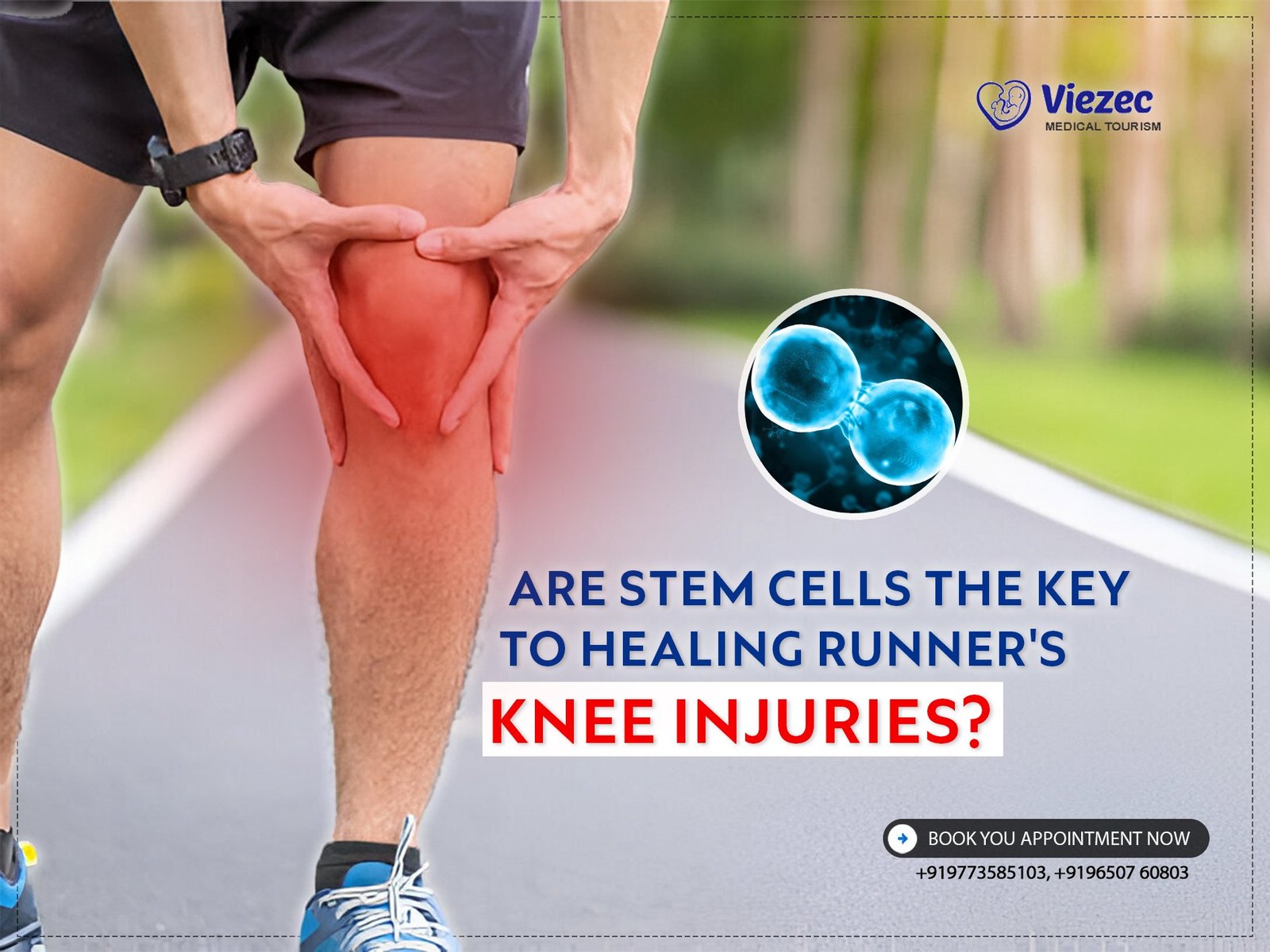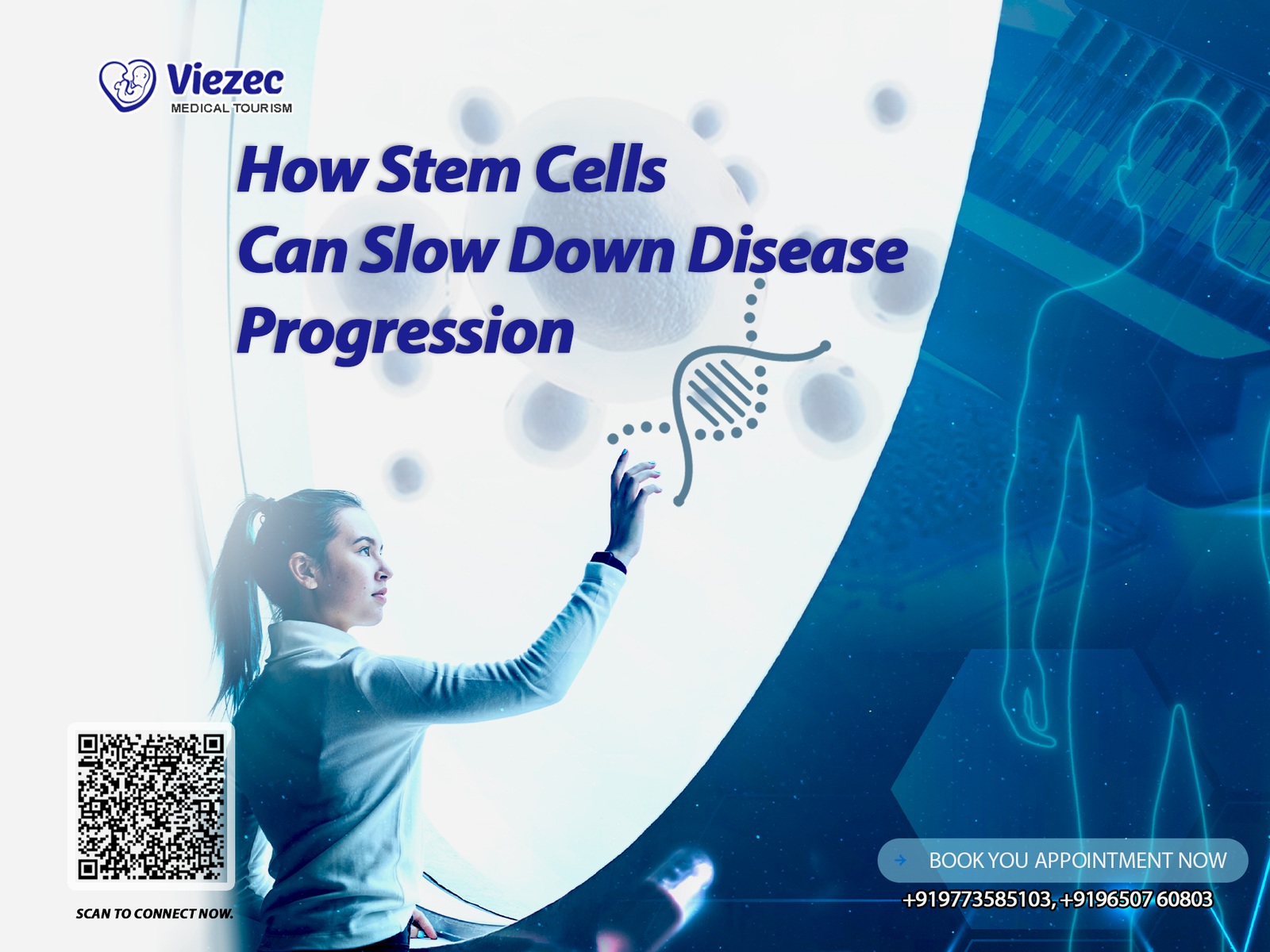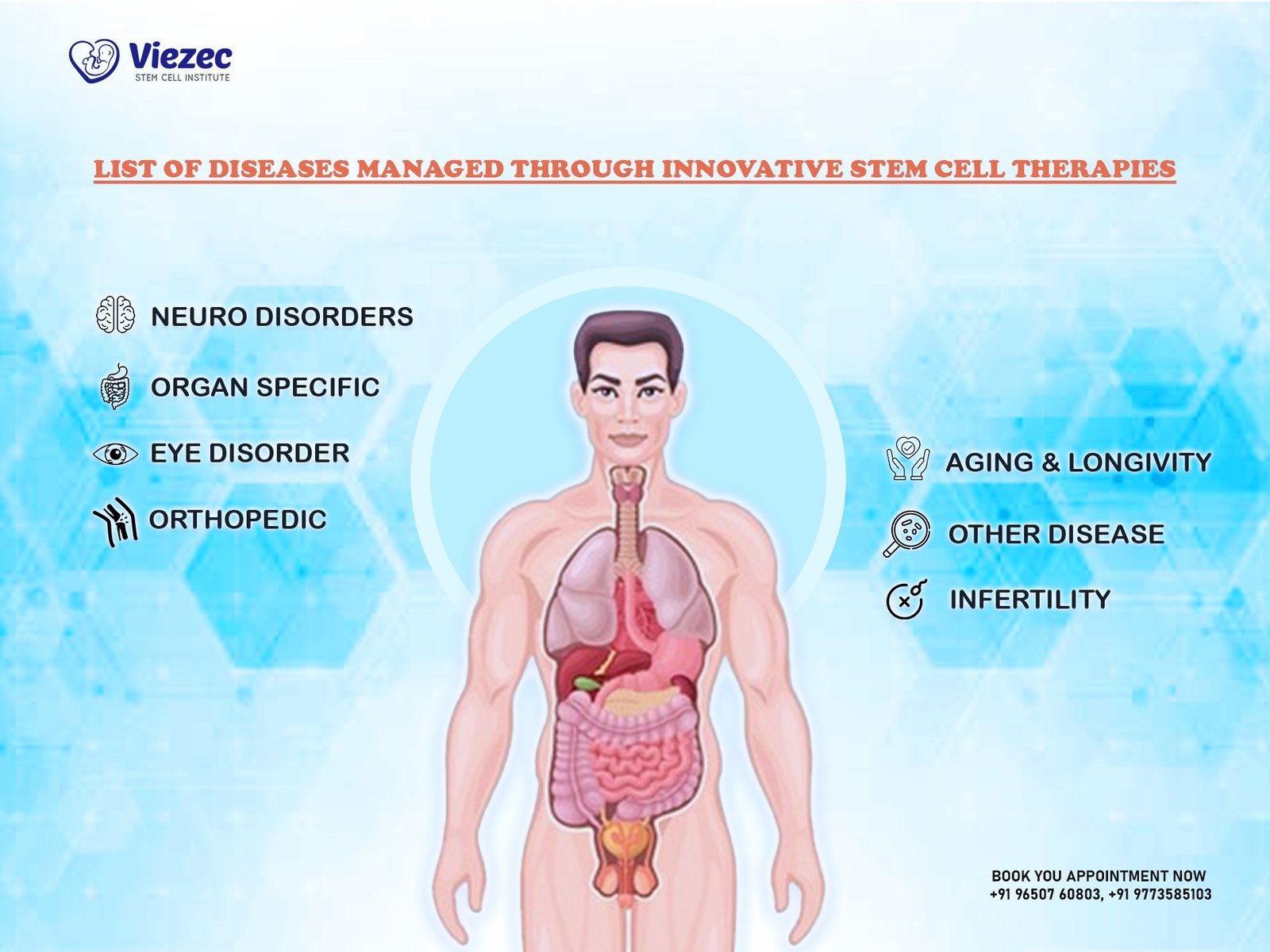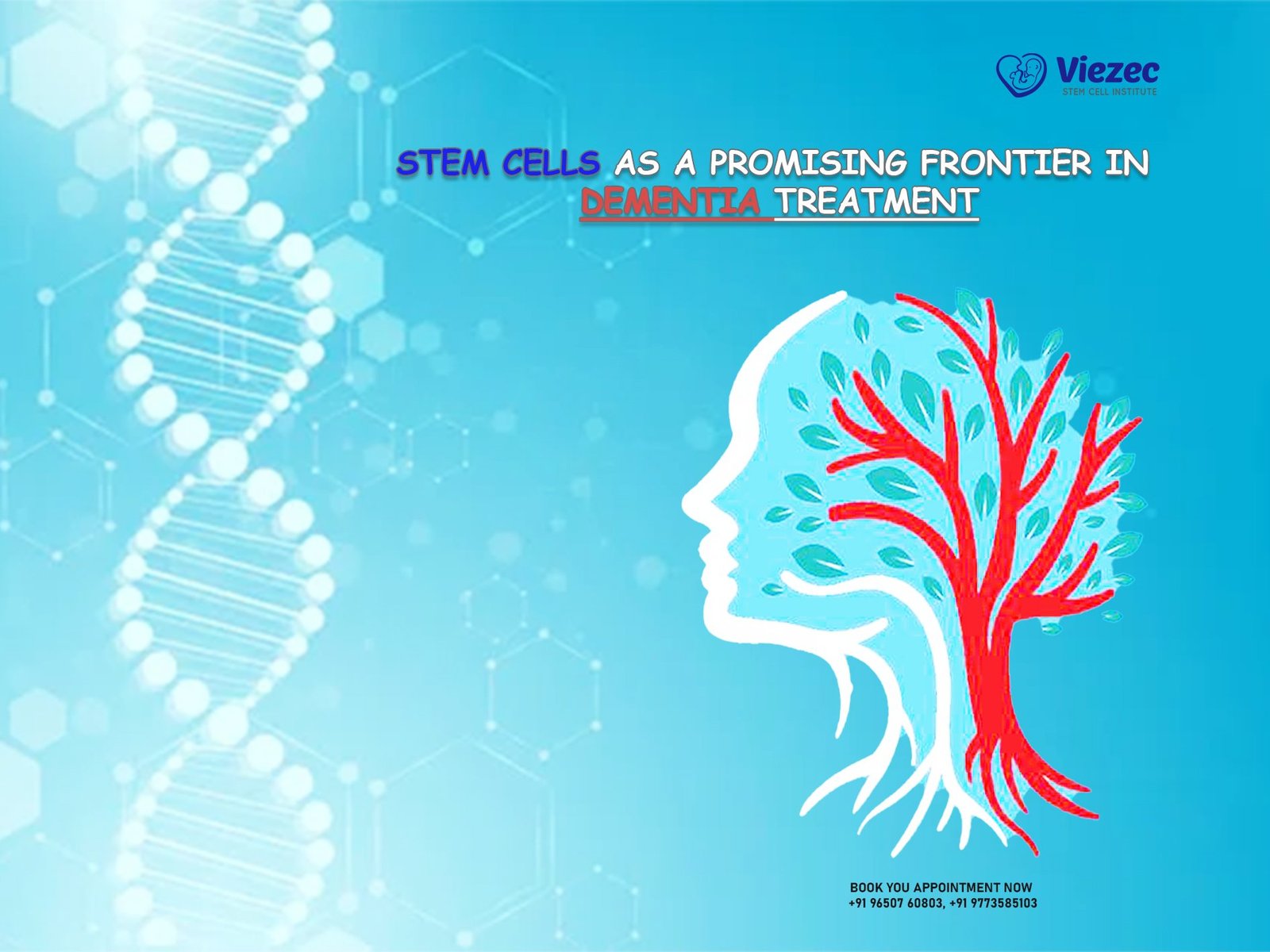Runner’s knee, medically known as patellofemoral pain syndrome (PFPS), is a common ailment among athletes, particularly those who engage in repetitive motion activities such as running, cycling, and jumping. This condition manifests as pain around or behind the kneecap, exacerbated by activities that put pressure on the knee joint. The pain can be debilitating, forcing athletes to reduce their activity levels or, in severe cases, stop exercising altogether. Traditional treatment methods, including rest, physical therapy, and sometimes surgery, often provide relief but do not address the underlying damage to knee tissues. In recent years, stem cell therapy has emerged as a promising alternative, offering potential regenerative solutions for tissue repair and healing.
What is Runner’s Knee?
Runner’s knee is characterized by pain around the patella, or kneecap, often described as a dull, aching pain that worsens with activity. This condition is typically caused by a combination of overuse, improper knee alignment, and muscle imbalances. The pain associated with runner’s knee can significantly impact an athlete’s performance, making it difficult to continue training or competing. The condition is not limited to runners; anyone who engages in activities that put repetitive stress on the knee joint can develop runner’s knee. Understanding the nature of this injury is crucial for effective treatment and prevention.
Prevalence Among Athletes
Runner’s knee is one of the most common overuse injuries seen in athletes, affecting up to 25% of runners at some point in their lives. This condition is particularly prevalent among women, likely due to differences in hip structure and biomechanics compared to men. In addition to runners, athletes in sports such as soccer, basketball, and skiing are also at high risk for developing runner’s knee. The high prevalence of this condition highlights the need for effective prevention strategies and treatment options that allow athletes to maintain their performance levels without long-term damage to their knees.
Traditional Treatment Methods
Traditional treatments for runner’s knee typically focus on relieving symptoms and preventing further injury. Rest and activity modification are usually the first steps, allowing the knee to recover from overuse. Physical therapy plays a crucial role in strengthening the muscles around the knee, improving flexibility, and correcting biomechanical issues. Anti-inflammatory medications and pain relievers are commonly used to manage pain and reduce inflammation. In severe cases where conservative treatments fail, surgical interventions such as arthroscopy may be considered to repair damaged tissues. However, these traditional methods often fall short in addressing the underlying tissue damage, leading to recurring issues and prolonged recovery periods.
Understanding Stem Cells
Stem cells are undifferentiated cells capable of developing into various specialized cell types. Their unique ability to self-renew and differentiate makes them invaluable in medical research and treatment. Stem cells are classified into several types, each with distinct characteristics and potential applications. These cells play a pivotal role in regenerative medicine, offering the potential to repair or replace damaged tissues, including those affected by conditions like runner’s knee.
Definition and Types
Stem cells are broadly categorized into embryonic stem cells, adult stem cells, and induced pluripotent stem cells (iPSCs). Embryonic stem cells, derived from early-stage embryos, have the ability to differentiate into any cell type in the body. Adult stem cells, found in various tissues such as bone marrow and fat, are more limited in their differentiation potential but still offer significant therapeutic benefits. Induced pluripotent stem cells are genetically reprogrammed adult cells that acquire characteristics similar to embryonic stem cells. Each type of stem cell has unique properties that make it suitable for different therapeutic applications, including the treatment of musculoskeletal injuries.
Sources of Stem Cells
Stem cells can be harvested from various sources, each offering distinct advantages and challenges. Bone marrow and adipose tissue (fat) are the most common sources of adult stem cells used in regenerative therapies. Bone marrow-derived stem cells are rich in mesenchymal stem cells (MSCs), which are known for their ability to differentiate into bone, cartilage, and muscle tissues. Adipose-derived stem cells are abundant and easily accessible, making them a popular choice for many therapeutic applications. Additionally, umbilical cord blood and amniotic fluid are rich sources of stem cells, particularly for allogeneic transplants. Advances in stem cell technology continue to expand the potential sources and applications of these versatile cells.
Mechanisms of Action
The therapeutic potential of stem cells lies in their ability to promote tissue repair and regeneration through various mechanisms. Stem cells can differentiate into specific cell types needed for tissue repair, such as chondrocytes in the case of cartilage damage. They also secrete bioactive molecules, including growth factors and cytokines, which modulate the local immune response and promote healing. Additionally, stem cells can enhance angiogenesis, the formation of new blood vessels, which is crucial for supplying nutrients and oxygen to damaged tissues. These combined actions make stem cells a powerful tool in regenerative medicine, with the potential to revolutionize the treatment of musculoskeletal injuries like runner’s knee.
Runner’s Knee: Causes and Symptoms
Understanding the causes and symptoms of runner’s knee is essential for effective diagnosis and treatment. This condition is multifactorial, arising from a combination of overuse, biomechanical issues, and muscle imbalances. Recognizing the early signs and symptoms can help prevent the progression of the condition and guide appropriate therapeutic interventions.
Overuse and Biomechanical Factors
Runner’s knee is primarily caused by repetitive stress on the knee joint, often exacerbated by poor biomechanics and muscle imbalances. Overuse from activities such as running, cycling, and jumping places significant strain on the patellofemoral joint, leading to inflammation and pain. Biomechanical factors, including improper alignment of the kneecap, flat feet, and weak or imbalanced thigh muscles, can further contribute to the development of runner’s knee. These factors can alter the tracking of the patella, increasing stress on the surrounding tissues and leading to pain and discomfort.
Common Symptoms
The hallmark symptom of runner’s knee is a dull, aching pain around or behind the kneecap. This pain typically worsens with activities that involve bending the knee, such as running, squatting, climbing stairs, and sitting for prolonged periods. Other common symptoms include swelling, a grinding or popping sensation in the knee, and tenderness around the patella. In some cases, individuals may experience a sensation of the knee “giving way,” indicating weakness or instability in the joint. Early recognition of these symptoms is crucial for preventing further damage and initiating appropriate treatment.
Diagnosis and Imaging Techniques
Diagnosing runner’s knee involves a thorough clinical evaluation, including a detailed history and physical examination. Physicians assess the patient’s activity levels, biomechanics, and any previous knee injuries. Imaging techniques, such as X-rays, MRI, and CT scans, are often used to rule out other potential causes of knee pain and to assess the extent of tissue damage. X-rays can help identify any structural abnormalities, while MRI and CT scans provide detailed images of the soft tissues, including cartilage, ligaments, and tendons. These diagnostic tools are essential for developing a comprehensive treatment plan tailored to the individual patient’s needs.
Current Treatments for Runner’s Knee
Traditional treatments for runner’s knee focus on alleviating symptoms and addressing the underlying causes of the condition. These treatments range from conservative measures, such as rest and physical therapy, to more invasive interventions like surgery. Each approach has its benefits and limitations, and the choice of treatment depends on the severity of the condition and the patient’s overall health and activity levels.
Rest and Physical Therapy
Rest is a fundamental component of treatment for runner’s knee, allowing the inflamed tissues to recover from overuse. Activity modification, including reducing the frequency and intensity of exercises that exacerbate knee pain, is essential to prevent further damage. Physical therapy plays a crucial role in the rehabilitation process, focusing on strengthening the muscles around the knee, improving flexibility, and correcting biomechanical issues. Therapeutic exercises, stretching, and techniques such as taping or bracing can help alleviate pain and enhance knee function. Physical therapists also educate patients on proper running techniques and footwear choices to prevent recurrence of the condition.
Medication and Pain Management
Medications are commonly used to manage the pain and inflammation associated with runner’s knee. Nonsteroidal anti-inflammatory drugs (NSAIDs), such as ibuprofen and naproxen, are effective in reducing pain and swelling. In some cases, corticosteroid injections may be administered to provide temporary relief from severe pain and inflammation. Pain management strategies also include the use of ice packs, heat therapy, and topical analgesics. While these methods can alleviate symptoms, they do not address the underlying tissue damage, highlighting the need for more comprehensive treatment approaches.
Surgical Interventions
Surgical interventions are considered for runner’s knee when conservative treatments fail to provide relief. Arthroscopy, a minimally invasive surgical procedure, is commonly used to repair damaged tissues and remove debris from the knee joint. This procedure involves inserting a small camera and surgical instruments into the knee through tiny incisions. In severe cases, realignment procedures may be necessary to correct patellar tracking issues and reduce stress on the knee joint. While surgery can be effective in alleviating pain and restoring function, it carries risks and requires a significant recovery period. Therefore, it is typically reserved for cases where other treatments have proven unsuccessful.
Stem Cell Therapy: An Emerging Treatment
Stem cell therapy represents a groundbreaking approach in the treatment of runner’s knee, leveraging the regenerative potential of stem cells to repair and regenerate damaged tissues. This innovative treatment modality offers hope for athletes and individuals suffering from chronic knee pain, providing an alternative to traditional methods that often fall short in addressing the underlying causes of the condition.
Introduction to Regenerative Medicine
Regenerative medicine is a rapidly evolving field focused on developing therapies that restore, replace, or regenerate damaged tissues and organs. Stem cell therapy is a cornerstone of regenerative medicine
, utilizing the unique properties of stem cells to promote healing and tissue regeneration. Unlike traditional treatments that primarily focus on symptom management, regenerative medicine aims to address the root causes of conditions like runner’s knee, potentially offering more durable and effective solutions. The field of regenerative medicine continues to expand, driven by advances in stem cell research and technology, offering new hope for patients with various musculoskeletal injuries.
How Stem Cells Can Aid in Healing
Stem cells have the unique ability to differentiate into various cell types, including those necessary for repairing damaged knee tissues, such as chondrocytes, which are responsible for cartilage formation. When injected into the knee joint, stem cells can enhance tissue repair and regeneration through several mechanisms. They secrete bioactive molecules that modulate the local immune response, reduce inflammation, and promote the healing of damaged tissues. Additionally, stem cells can stimulate the formation of new blood vessels, improving the delivery of nutrients and oxygen to the injured area. These combined effects make stem cell therapy a promising treatment for runner’s knee, potentially reducing pain and improving knee function.
Comparing Stem Cell Therapy to Traditional Methods
Stem cell therapy offers several advantages over traditional treatment methods for runner’s knee. Unlike medications and physical therapy that primarily focus on symptom relief, stem cell therapy targets the underlying tissue damage, promoting true healing and regeneration. This approach has the potential to provide more lasting relief and reduce the likelihood of recurrence. Compared to surgical interventions, stem cell therapy is minimally invasive, reducing the risks associated with surgery and shortening recovery times. However, it is essential to consider that stem cell therapy is still a relatively new field, and more research is needed to fully understand its long-term efficacy and safety. Nonetheless, the promising results from early studies and clinical trials suggest that stem cell therapy could revolutionize the treatment of runner’s knee and other musculoskeletal injuries.
Scientific Evidence and Research
The potential of stem cell therapy for treating runner’s knee is supported by a growing body of scientific evidence. Numerous studies and clinical trials have investigated the efficacy of stem cells in promoting tissue repair and reducing pain in patients with knee injuries. This section explores key findings from these studies, highlighting the benefits and limitations of stem cell therapy.
Key Studies and Findings
Several studies have demonstrated the potential of stem cell therapy in treating knee injuries, including runner’s knee. For instance, a study published in the Journal of Orthopaedic Research found that patients with knee osteoarthritis who received stem cell injections experienced significant improvements in pain and function compared to those who received placebo treatments. Another study published in the American Journal of Sports Medicine reported that athletes with patellar tendinopathy showed marked improvement in pain and knee function after receiving stem cell therapy. These findings suggest that stem cells can effectively reduce pain and promote tissue regeneration in patients with various knee conditions, including runner’s knee.
Clinical Trials and Outcomes
Clinical trials are essential for evaluating the safety and efficacy of stem cell therapy in larger patient populations. Several clinical trials have investigated the use of stem cells for treating knee injuries, with promising results. A randomized controlled trial published in the Journal of Clinical Orthopaedics and Trauma found that patients with knee osteoarthritis who received stem cell injections showed significant improvement in pain and knee function compared to those who received hyaluronic acid injections. Another clinical trial published in Stem Cells Translational Medicine reported that patients with chronic patellar tendinopathy experienced reduced pain and improved function after receiving stem cell therapy. These trials provide strong evidence supporting the use of stem cell therapy for treating runner’s knee and other knee injuries.
Limitations and Controversies
Despite the promising results, stem cell therapy for runner’s knee is not without limitations and controversies. One of the primary challenges is the variability in treatment protocols, including the source and type of stem cells used, the method of administration, and the dosing regimen. This variability can affect the consistency and reproducibility of treatment outcomes. Additionally, the long-term safety and efficacy of stem cell therapy are still being investigated, with some studies reporting potential risks such as infection, immune reactions, and the formation of abnormal tissues. Ethical concerns also arise regarding the use of embryonic stem cells, although adult stem cells and iPSCs offer less contentious alternatives. Ongoing research and standardized protocols are essential to address these limitations and ensure the safe and effective use of stem cell therapy for runner’s knee.
Procedure of Stem Cell Therapy for Runner’s Knee
The process of stem cell therapy for runner’s knee involves several steps, from patient evaluation and selection to harvesting stem cells and administering the treatment. Each step is critical for ensuring the safety and efficacy of the therapy, and patients must be carefully evaluated to determine their suitability for the procedure.
Patient Evaluation and Selection
The first step in stem cell therapy for runner’s knee is a thorough evaluation of the patient to determine their eligibility for the treatment. This evaluation includes a detailed medical history, physical examination, and imaging studies to assess the extent of knee damage and identify any underlying conditions that may affect the treatment outcome. Patients with chronic knee pain, persistent symptoms despite conservative treatments, and evidence of tissue damage on imaging studies are typically considered good candidates for stem cell therapy. However, patients with active infections, malignancies, or severe comorbidities may not be suitable for the procedure. A comprehensive evaluation ensures that only appropriate candidates receive the treatment, optimizing the chances of a successful outcome.
Harvesting Stem Cells
Once a patient is deemed eligible for stem cell therapy, the next step is harvesting the stem cells. The most common sources of stem cells for treating runner’s knee are bone marrow and adipose tissue. Bone marrow aspiration involves extracting bone marrow from the patient’s pelvis using a needle and syringe under local anesthesia. Adipose tissue harvesting involves liposuction to collect fat from areas such as the abdomen or thighs. The harvested tissue is then processed to isolate and concentrate the stem cells, which are prepared for injection into the knee joint. This process is typically performed on an outpatient basis and involves minimal discomfort for the patient.
Injection Process and Post-Procedure Care
After harvesting and processing the stem cells, they are injected into the affected knee joint under sterile conditions. The injection process is usually guided by ultrasound or fluoroscopy to ensure precise placement of the stem cells into the damaged area. Local anesthesia is used to minimize discomfort during the procedure. Following the injection, patients are advised to rest and avoid strenuous activities for a specified period to allow the stem cells to initiate the healing process. Physical therapy may be recommended to support rehabilitation and enhance the effectiveness of the treatment. Follow-up appointments are essential to monitor the patient’s progress and assess the treatment outcome. While the procedure is minimally invasive, proper post-procedure care is crucial for maximizing the benefits of stem cell therapy.
Benefits and Risks of Stem Cell Therapy
Stem cell therapy offers several potential benefits for treating runner’s knee, but it is also associated with certain risks and complications. Understanding these benefits and risks is essential for making informed decisions about the treatment.
Potential Advantages
One of the primary advantages of stem cell therapy for runner’s knee is its potential to promote true healing and tissue regeneration, rather than merely alleviating symptoms. By targeting the underlying tissue damage, stem cell therapy can provide more lasting relief and reduce the likelihood of recurrence. Additionally, the minimally invasive nature of the procedure reduces the risks associated with surgery and shortens recovery times. Stem cell therapy also has the potential to improve overall knee function, allowing athletes to return to their activities more quickly and with less pain. These benefits make stem cell therapy a promising option for individuals suffering from chronic knee pain and injuries.
Possible Side Effects and Complications
Despite its potential benefits, stem cell therapy is not without risks. Possible side effects and complications include infection at the injection site, bleeding, and pain. There is also a risk of immune reactions, particularly with allogeneic stem cell transplants. In rare cases, stem cells may form abnormal tissues or tumors, although this risk is more commonly associated with embryonic stem cells. It is essential for patients to be fully informed of these risks and to undergo treatment at reputable medical centers with experienced clinicians. Close monitoring and follow-up care are crucial for identifying and managing any potential complications early.
Long-term Efficacy and Safety
The long-term efficacy and safety of stem cell therapy for runner’s knee are still being investigated. While early studies and clinical trials have shown promising results, more research is needed to fully understand the durability of the treatment effects and the potential long-term risks. Ongoing clinical trials and long-term follow-up studies are essential for providing comprehensive data on the outcomes of stem cell therapy. Patients considering this treatment should discuss the current evidence and potential risks with their healthcare providers to make informed decisions about their care. As research continues, the knowledge gained will help refine treatment protocols and improve the overall safety and efficacy of stem cell therapy for runner’s knee.
Patient Experiences and Testimonials
Patient experiences and testimonials provide valuable insights into the real-world outcomes of stem cell therapy for runner’s knee. Case studies, success stories, and patient perspectives highlight the potential benefits and challenges of the treatment, offering a more personal view of the therapy’s impact.
Case Studies
Case studies of patients who have undergone stem cell therapy for runner’s knee often demonstrate significant improvements in pain and knee function. For example, a case study published in a medical journal described a patient with chronic patellar tendinopathy who experienced substantial pain relief and improved knee mobility following stem cell therapy. Another case study highlighted an athlete with recurrent knee pain who returned to competitive sports after receiving stem cell injections. These case studies provide compelling evidence of the potential benefits of stem cell therapy, particularly for individuals who have not responded to traditional treatments.
Success Stories
Success stories from patients who have undergone stem cell therapy for runner’s knee often emphasize the transformative impact of the treatment on their lives. Patients report reduced pain, improved mobility, and a return to activities they had previously been unable to perform. For instance, a marathon runner who had been sidelined by knee pain for years shared how stem cell therapy allowed them to resume training and complete races without pain. Another patient described how the treatment enabled them to avoid surgery and continue enjoying recreational activities such as hiking and cycling. These success stories highlight the potential of stem cell therapy to improve the quality of life for individuals suffering from chronic knee pain.
Patient Perspectives
Patient perspectives on stem cell therapy for runner’s knee offer valuable insights into the treatment experience, including the decision-making process, the procedure itself, and the recovery period. Patients often describe their initial skepticism and the thorough research they conducted before deciding to undergo the treatment. Many emphasize the importance of finding experienced clinicians and reputable medical centers to ensure the best possible outcomes. Patients also share their experiences with the procedure, noting the minimal discomfort and the supportive care provided by medical staff. Overall, patient perspectives highlight the importance of education, communication, and informed decision-making in achieving successful treatment outcomes.
FAQs
What is the success rate of stem cell therapy for runner’s knee?
The success rate of stem cell therapy for runner’s knee varies depending on several factors, including the severity of the condition, the patient’s overall health, and the specific treatment protocol used. Early studies and clinical trials have shown promising results, with many patients experiencing significant pain relief and improved knee function. However, more research is needed to determine the long-term efficacy and consistency of the treatment across larger populations.
How long does it take to see results from stem cell therapy?
The timeline for seeing results from stem cell therapy can vary. Some patients report improvements in pain and function within a few weeks, while others may take several months to experience the full benefits of the treatment. The healing process involves tissue regeneration, which can take time. Patients should follow their healthcare provider’s recommendations for post-procedure care and rehabilitation to optimize their recovery.
Are there any risks associated with stem cell therapy for runner’s knee?
As with any medical treatment, stem cell therapy carries certain risks. Possible side effects include infection, bleeding, and pain at the injection site. There is also a risk of immune reactions and, in rare cases, the formation of abnormal tissues. Patients should discuss the potential risks and benefits with their healthcare provider and ensure they receive treatment from experienced clinicians at reputable medical centers.
Is stem cell therapy covered by insurance for runner’s knee?
Coverage for stem cell therapy varies widely among insurance providers and depends on the specific policy and the medical necessity of the treatment. Some insurance companies may cover the procedure, particularly if it is part of a clinical trial or if traditional treatments have been unsuccessful. Patients should contact their insurance provider to determine coverage and explore potential financial options for the treatment.









